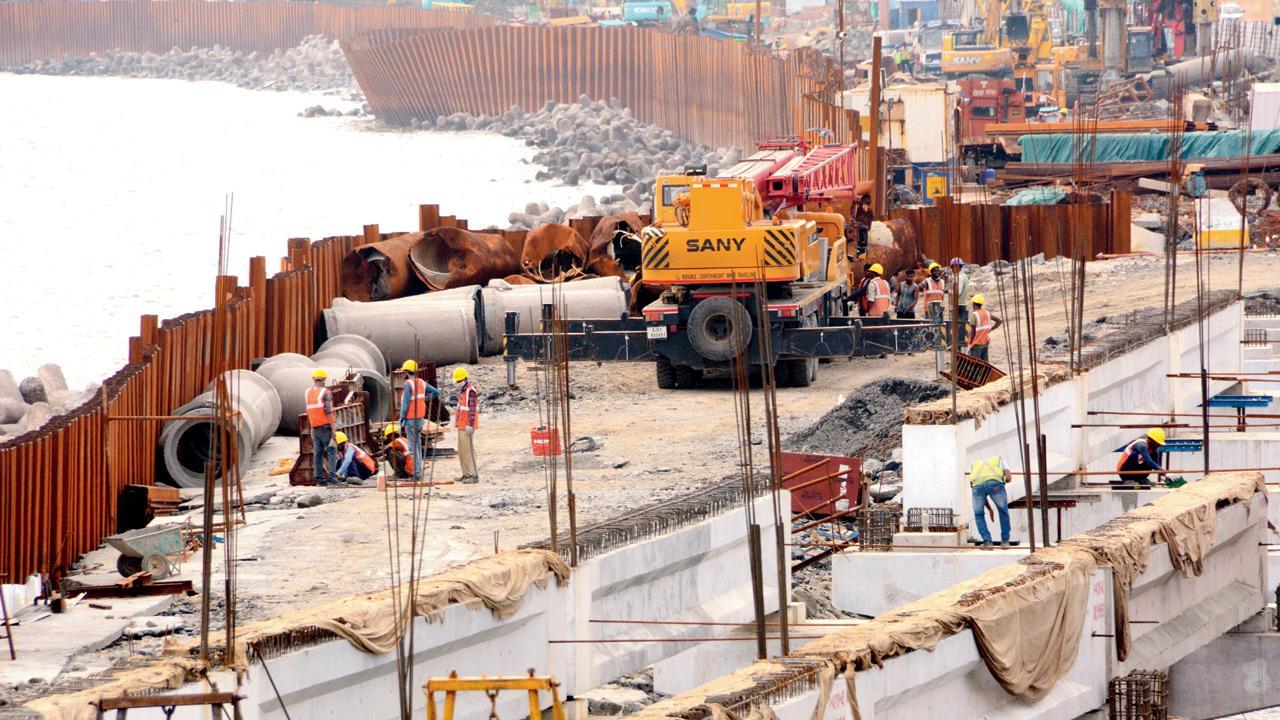Why does it feel as if development and convenience always come at a price we refuse to acknowledge?

The rich should be able to move in comfort, that alone is the thought that drives everything we do in the name of development. File/Satej Shinde
I know a few people who look the other way whenever they drive past Worli and Peddar Road these days. They do this wilfully to avoid a deep sadness that overwhelms them when they are confronted with views of the sea. This reaction comes as a surprise to them, much as it did to me until they explained why.
ADVERTISEMENT
These are people whose faces would light up whenever they approached those specific parts of Bombay, because of how they have always reminded us of our good fortune as residents of a city surrounded by water. They can’t bear to look at it anymore though, because where seagulls and bobbing boats once met their eyes are now cranes, reclaimed land, and the ugly spectre of another road that has only just begun to appear.
It is ridiculous to assume that anyone who has a problem with a new road is against the idea of development. Those charges were levelled against people who refused to accept a Metro car shed at Aarey Milk Colony too, because it’s the easiest way to sway public opinion. Label someone anti-national, call them enemies of progress, and you can easily convince a few million people to rise up and denounce them. It’s interesting how we rarely wonder what people who love Bombay really want though. Why do they shout from the rooftops when a part of this city is broken off and removed? Why do they fight for the old when there’s something shiny and new dangled before everyone else’s eyes?
The coastal sea road will probably make life simpler for a few thousand car owners who will use it to get from one part of the city to another a few minutes faster than they currently do. It may even help a few other people over the years, if a faster commute can be equated with genuine help. I think about the millions who will be denied what so many of us took for granted until now though: unfettered access to a sea that lapped against our shores freely from a time long before the city of Bombay existed. I think about joggers at Marine Drive and Worli seaface, the families who congregate there morning and night, desperate for breaths of fresh air that are otherwise so hard to come by.
The presence or absence of a road will mean nothing to those who live in high-rises dotted along the coast. It will change the view of people on the ground forever though, and they are the ones I think about: the ones forced to turn their faces away in sadness at something they loved that is no longer destined to exist.
Someone, somewhere, will benefit from the new roads, malls and other dubious structures that routinely pop up on the manifestos of political parties with regularity. They are always supposed to make things better for us, but I look at the Sea Link that has now been around for a while, and wonder if the number of people it has benefited justifies what it cost the rest of us. Yes, it looks great as a backdrop to selfies on Instagram, but what about the other ways in which it changed our city? We are not interested in impact studies, safe as we are in the knowledge that public memory is short, that dirty linen can be aired with impunity because sins are so easily forgiven.
The rich should be able to move in comfort, that alone is the thought that drives everything we do in the name of development. After all, if we really cared about uplifting every resident of this city, we would have put up public toilets on every street corner a long time ago.
We are constantly asked to look to the future, to envision a city of steel and glass, a new Shanghai that will take its place among the world’s greatest cities. I love looking at the future as much as the next person; I worry about the past too though, and what we constantly ride roughshod over in our attempt to get bigger and better and shinier. Bombay was once an undeniably pretty city, which is something I no longer say with the same level of certitude. We are not replacing it with a better, more humane version of what it is. We are simply building a place where we can move through it a little faster. I, for one, don’t think of this as a fair bargain.
When he isn’t ranting about all things Mumbai, Lindsay Pereira can be almost sweet. He tweets @lindsaypereira
Send your feedback to mailbag@mid-day.com
The views expressed in this column are the individual’s and don’t represent those of the paper.
 Subscribe today by clicking the link and stay updated with the latest news!" Click here!
Subscribe today by clicking the link and stay updated with the latest news!" Click here!






